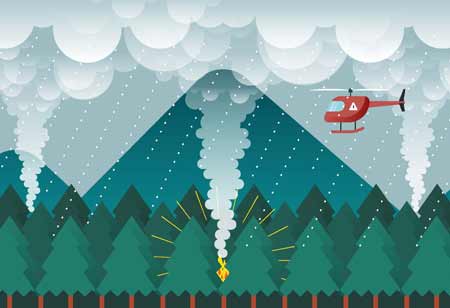THANK YOU FOR SUBSCRIBING
Be first to read the latest tech news, Industry Leader's Insights, and CIO interviews of medium and large enterprises exclusively from Gov CIO Outlook
THANK YOU FOR SUBSCRIBING

By
Government CIO Outlook | Thursday, September 23, 2021
Stay ahead of the industry with exclusive feature stories on the top companies, expert insights and the latest news delivered straight to your inbox. Subscribe today.
Nurses who work in public health play an important role in educating the public and assisting those who are recuperating from disasters.
FREMONT, CA: Massive health disasters are becoming more regular. As climate change accelerates, so will the number of persons killed or injured due to climate-related natural disasters. Natural disasters claimed over 8,000 lives globally in 2020. Infections and contagious diseases, food and waterborne infections, global pandemics, and even the flu can cause significant public health disasters.
Further, illnesses are increasingly combining with natural calamities to create major emergencies. Natural catastrophes displace people, create overcrowding, and raise the likelihood of inadequate sanitation, causing the disease to spread more quickly. Nurses who work in public health play an important role in educating the public and assisting those who are recuperating from disasters.
Disaster Nursing and Emergency Preparedness
Nurses who work in public health are heavily involved in emergency preparedness and recovery. One should consider examining their own skillset, identify the dangers most likely to affect the community, and then devising measures to prepare for the worst-case scenario.
Consider the following contributions:
Assessing local risks and prevention strategies.
Public leaders are being educated about public health issues and campaigning for related legislative reform. One may, for example, advocate for free flu shots or the appointment of a local catastrophe planner.
Updating the disaster management and preparedness knowledge. To make sure if one is ready, look into continuing education courses, seminars, and drills.
Educating the Public
Every location faces a distinct set of dangers, which frequently interact. Large cities near fault lines must prepare for earthquakes, and all densely populated locations must be ready to deal with everything from swiftly spreading diseases to terrorist attacks.
For example, much of California is facing increasing wildfire dangers, as well as the ever-present threat of earthquakes. When these disasters happen, crowded communities, particularly disadvantaged ones, are more vulnerable to disease transmission. Public education is the primary responsibility of public health nurses.
Create a disaster management toolkit to guarantee that one can safeguard the family and respond to patients successfully in the case of a crisis. First responders should include critical equipment in their tactical trauma kit–one cannot properly care for others if they or a family member suffers a catastrophic injury, so make sure to have basic resources in the family emergency pack, such as medications, food, and water.
It is also crucial to look after oneself and mentally prepare for the obstacles of disaster management. Drills on a regular basis, open dialogues, and self-soothing techniques like mindfulness and meditation are all important. Mental health is vital since maintaining a calm demeanor is essential for providing excellent care.
I agree We use cookies on this website to enhance your user experience. By clicking any link on this page you are giving your consent for us to set cookies. More info



